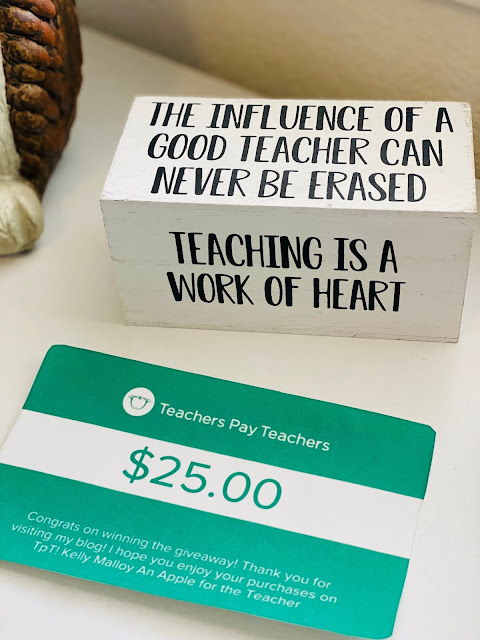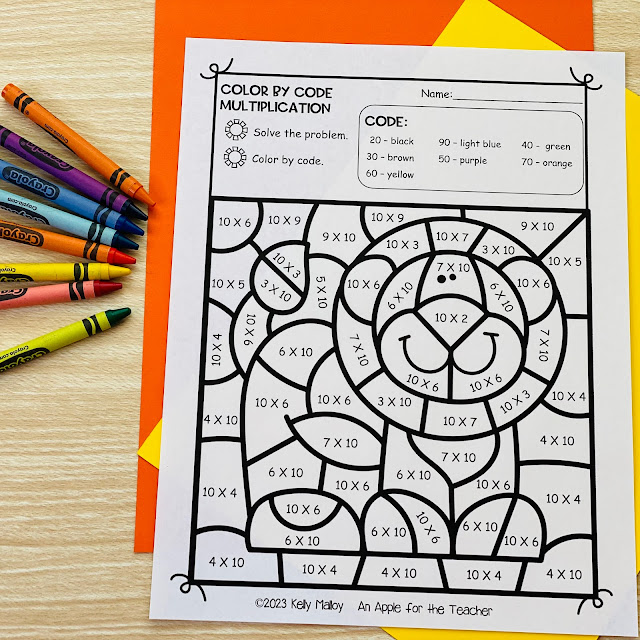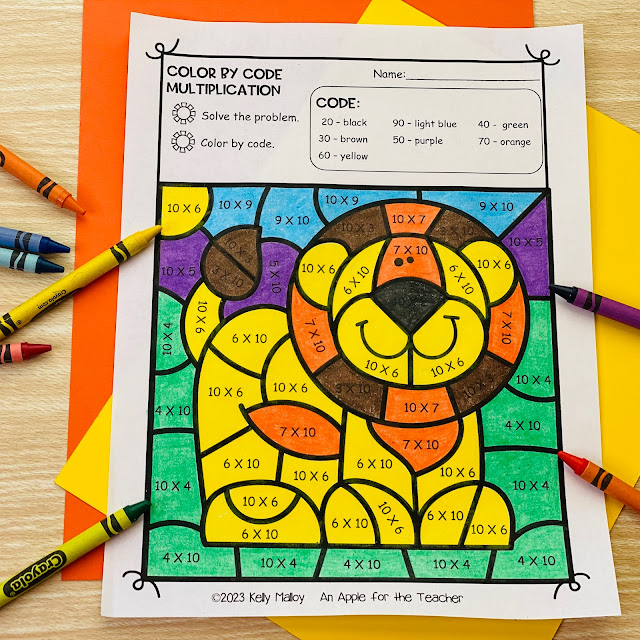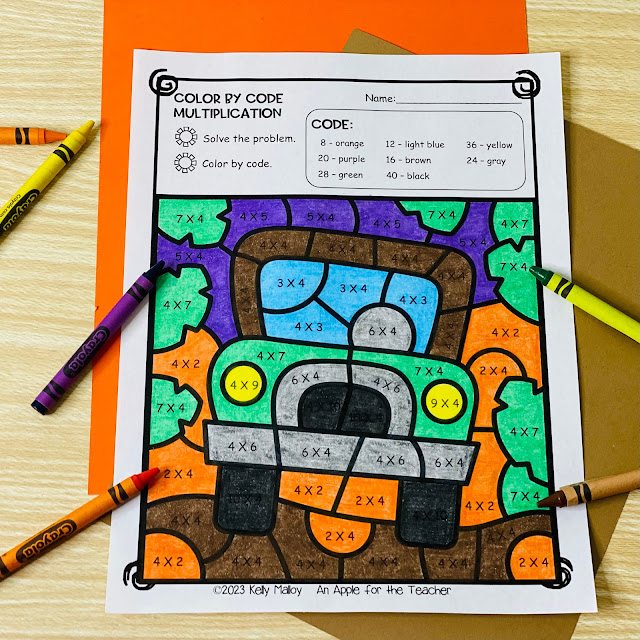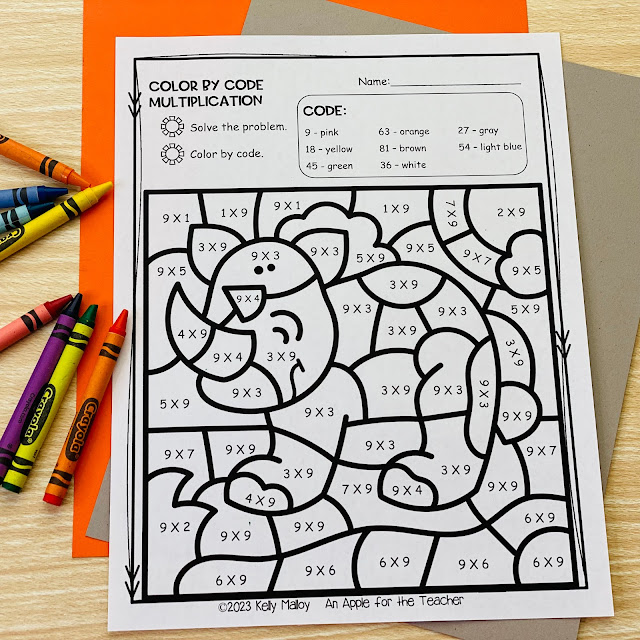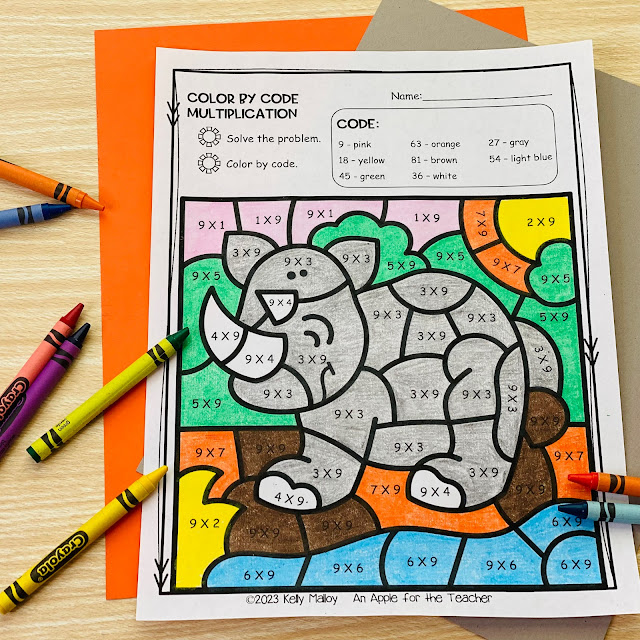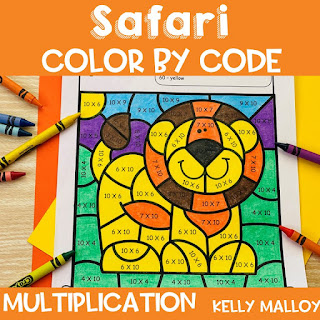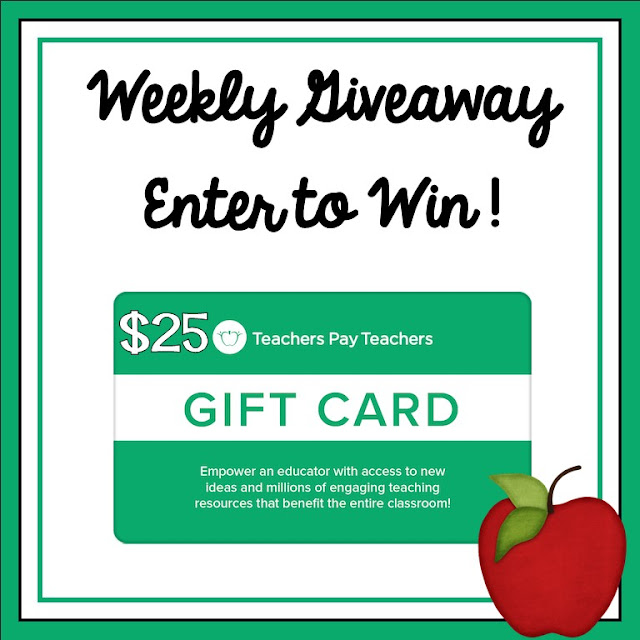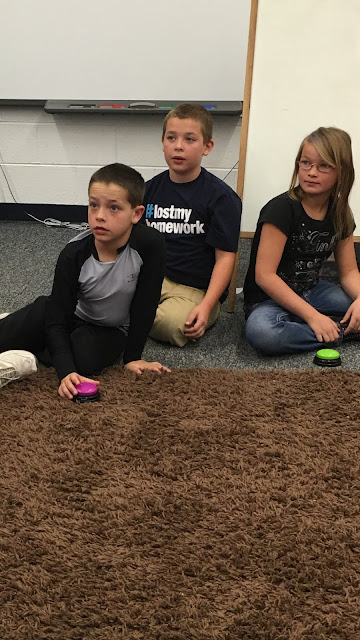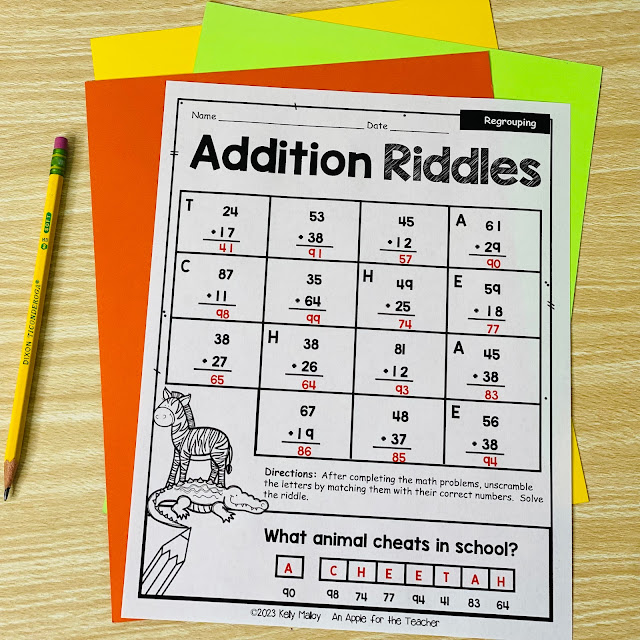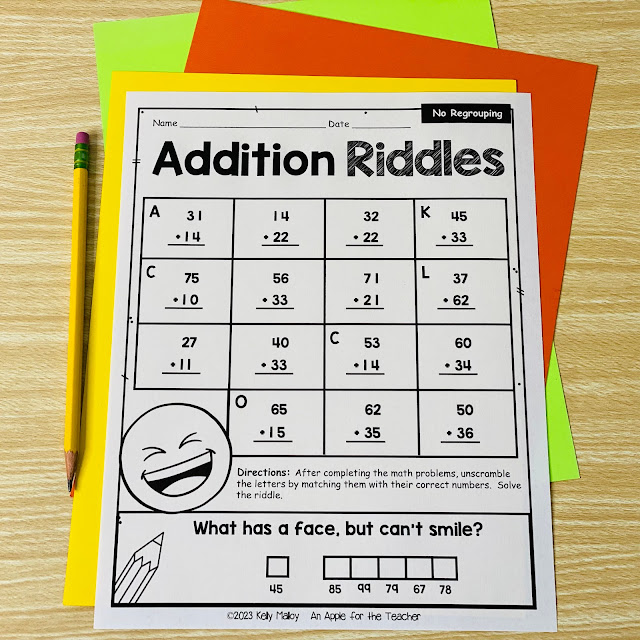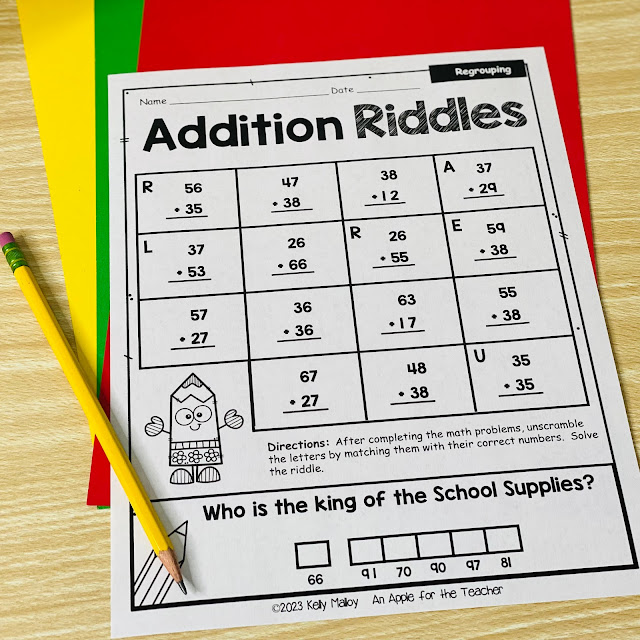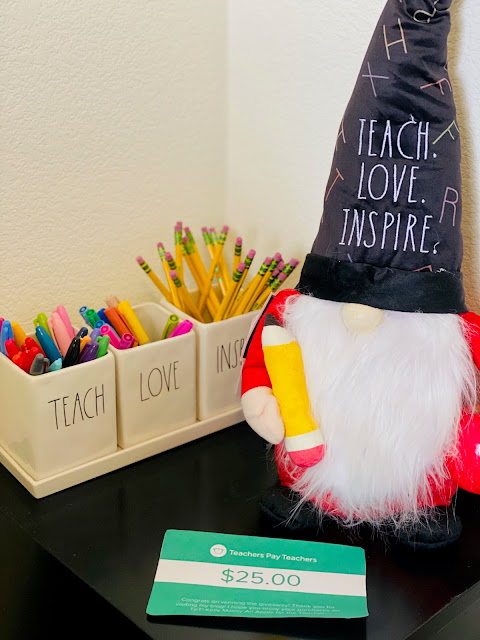Teacher Giveaway
Monday, August 28, 2023
Teacher Giveaway! Weekly $25 Teachers pay Teachers Gift Card Giveaway August 28, 2023
Teacher Giveaway
Wednesday, August 23, 2023
Roaring Fun: Safari Animal Multiplication Color by Number Sheets
If you're on the hunt for a wildly engaging way to teach multiplication, you're in for a treat. My latest resource is about bringing the enchanting world of safari animals into your math class.
Get ready to explore the savanna, meet majestic creatures, and master multiplication skills with these Safari Animal Multiplication Color by Number sheets. 🦓🦒🐆
Why Safari Animals?
Safari animals have an incredible allure, don't they? 🐾 But why incorporate them into multiplication practice? Well, it's all about making learning memorable and exciting. When students associate math with something fun and fascinating, it can transform their learning experience. Plus, the rich variety of animals in the safari provides an excellent opportunity for diverse math problems.
Features of Our Resource:
Let's take a sneak peek at what makes these Safari Animal Multiplication Color by Number sheets roar with excitement:
Vibrant Safari Scenes: Each Sarari Animal coloring sheet features a stunning safari backdrop, complete with the savanna's most iconic residents, from majestic lions to massive rhinos and elephants.
Multiplication Magic: I've carefully crafted multiplication problems to suit different skill levels, making these sheets perfect for various grade levels.
Color by Number: Once students solve the problems, they can bring the safari to life by coloring in the animals and landscapes. It's like taking a mini safari adventure right in the classroom!
How to Use These Safari Animal Multiplication Sheets:
Now, you might be wondering how to incorporate these sheets into your lessons. Here are a few ideas:
Math Centers: Create a safari-themed math center where students can work on these sheets independently or in pairs.
Homework Fun: Send sheets home for homework; they're sure to be a hit with parents and students alike.
Safari Day: Dedicate a special day to multiplication and safari adventures in your classroom. You can even dress up as rangers!
Incorporating safari animals into multiplication practice is educational and heaps of fun. 🦓🌍
With these Safari Animal Multiplication Color by Number sheets, you can make math an unforgettable adventure for your students. So, what are you waiting for? Grab these worksheets today!
Monday, August 21, 2023
Teacher Giveaway! Weekly $25 Teachers pay Teachers Gift Card Giveaway August 21, 2023
Teacher Giveaway
Sunday, August 20, 2023
12 Ways to Use Answer Buzzers in the Classroom
Picture this: a room alive with the sound of eager buzzers, students leaning in with anticipation, and an atmosphere charged with energy. Wondering what magic is at play here?
This post contains affiliate links. I earn a small commission each time someone makes a purchase using one of my links, which helps to support the blog. All opinions are my own and I only promote brands and products that I have used myself and truly love.
Look no further than Learning Resources Answer Buzzers – the secret ingredient that's about to change the way you teach and engage your students.
Whether you're an experienced educator or a first-year teacher, these little buzzers hold the key to transforming ordinary lessons into extraordinary adventures.
How do you use answer buzzers in the classroom?
These buzzers can be a super fun and engaging tool for teachers and students. Here are some creative ways you could incorporate them:
1. Interactive Quizzes:
Turn your regular quizzes into a game show-style activity. Each student gets a buzzer, and they have to "buzz in" to answer questions. It adds a competitive edge to learning!
2. Team Trivia:
Divide the class into teams and create trivia questions related to the subject you're teaching. When a team knows the answer, they hit their buzzer. It's a fantastic way to review material before a test.
3. Vocabulary Showdown:
For language lessons, assign a word to each buzzer. When you give a definition, students have to buzz in with the correct word. This can help reinforce vocabulary in an engaging way.
4. Math Fact Speed Challenge:
Use the buzzers for quick math drills. Project math problems on the board, and students race to buzz in with the correct answer.
5. Literature Jeopardy:
Create a Jeopardy-style game where categories are based on different books or literary concepts. Students can buzz in to answer questions related to the novels you're studying.
6. Science Mystery:
Make science lessons more exciting by using buzzers to solve mysteries. Describe a scientific phenomenon, and students have to buzz in with the correct explanation.
7. Guess the Sound:
For younger students, play a "Guess the Sound" game. Play different animal or environmental sounds, and students buzz in to identify what they hear.
8. Foreign Language Practice:
If you're teaching a foreign language, use the buzzers for language drills. Give a word or phrase in English, and students buzz in to translate it.
9. Brain Teasers:
Challenge your students' critical thinking skills with brain teasers and riddles. They can buzz in when they think they've solved the puzzle.
10. Socratic Seminars:
Encourage class discussions by having a Socratic seminar using the buzzers. Students can buzz in to contribute their thoughts or ask questions about a particular topic.
11. Odd One Out (Which One Doesn't Belong)
Instead of using the buzzers with a quiz, you could prepare a few sentences or words which contain two wrong pieces of information or grammatical mistakes and one which is correct. For example, you could read out some vocabulary and the students (in their groups) have to buzz and explain which is the odd one out and why. See below for an example.
ear / leg / nose / mouth (‘leg’ is the odd one out as the others are on the head)
lemon / tomato / grape / potato (‘potato’ is the odd one out as the others are considered fruit)
speak / eat / buy / change (‘change’ is the odd one out as the other words are irregular verbs)
for math, try this Which One Doesn't Belong Book.
12. Buzzed Dictation
As a fun and engaging dictation/dictogloss activity, you could use a buzzer to fill in important words. For example, you could do the following: “I was walking to [BUZZ] and I met [BUZZ]. It was a long time since I last met [BUZZ] and we …”. Students listen to the story and then try to finish it with their ideas. You then compare their stories with the original. It is an engaging and motivating activity for students of any ability but ensure that the story is gauged at the appropriate level.
I hope the ideas suggested above were useful. If you would like to get your very own buzzers to use in your classroom, then you can purchase them online at Amazon.
How else could you use buzzers in class?
Monday, August 14, 2023
Mastering 2-Digit Addition with Engaging Math Riddles For 2nd Graders Worksheets
Why was the math book sad?
Because it had a lot of problems!
Using humor in the classroom can enhance the learning experience for both students and teachers. Humor catches students' attention and maintains their engagement.
This post contains affiliate links. I earn a small commission each time someone makes a purchase using one of my links, which helps to support the blog. All opinions are my own and I only promote brands and products that I have used myself and truly love.
That is why I created these Addition With and Without Regrouping Math Riddles Worksheets.
I'll tell you more about them at the end of this post, but I wanted to share some of the benefits of integrating jokes into the learning process.
Benefits of Using Humor in the Classroom
Engagement and Attention: Humor captures students' attention and maintains their engagement. A lighthearted joke, witty remark, or funny anecdote can break the monotony of lectures and make the learning environment more dynamic.
Memory Enhancement: Humorous content is often memorable. When students associate information with a funny situation or joke, they are more likely to retain and recall the material, leading to better long-term learning outcomes.
Stress Reduction: Laughter reduces stress and anxiety. A relaxed classroom atmosphere created by humor can lower students' apprehensions about difficult topics and foster a more positive attitude toward learning.
Classroom Atmosphere: A positive and joyful classroom environment can foster positive relationships between students and teachers. Humor can bridge gaps, create camaraderie, and make students feel more comfortable sharing their thoughts and asking questions.
Attention to Detail: Puns, wordplay, and riddles demand a higher level of cognitive engagement. Analyzing these elements encourages critical thinking and can deepen students' understanding of language nuances and content.
Creative Thinking: Humor often involves looking at things from unexpected angles. This can stimulate creative thinking and encourage students to explore alternative perspectives in problem-solving.
Motivation: Incorporating humor can make learning enjoyable, motivating students to actively participate in class activities and assignments.
Icebreaking: Especially at the beginning of a school year or when a new topic is introduced, humor can break the ice and help students feel more comfortable interacting with their peers and the teacher.
Enhanced Communication Skills: Understanding humor requires comprehension of context, language nuances, and social cues. Engaging with humor helps students refine their communication skills and emotional intelligence.
Retention of Complex Concepts: Humor can be used to simplify complex ideas, making them more relatable and easier to understand. This can be particularly useful in subjects like mathematics, science, and philosophy.
Boosting Confidence: Successfully understanding a joke or delivering a pun can boost students' self-confidence and sense of accomplishment.
Are you convinced that you need to add some fun to your math lessons?
Then check out these 2-Digit Addition Math Riddles Worksheets!
They were designed to help students master 2-digit addition in a fun and engaging manner. Traditional math worksheets can sometimes be monotonous and fail to spark students' interest.
These Math Riddles Worksheets address this issue by integrating interactive elements into the learning process. Each worksheet presents students with a series of two-digit addition equations. As they solve these equations, a letter is unveiled with each correct answer. These letters ultimately come together to form an answer to a riddle, adding an exciting element of mystery to the learning process.
Perfectly Aligned with Learning Objectives:
This resource covers both addition with and without regrouping, catering to various skill levels within the classroom. With five worksheets for each category, educators have a wealth of material at their disposal.
Whether students are just beginning to grasp the concept or are looking to refine their skills, these worksheets are versatile enough to accommodate different learning stages.
Each set of worksheets comes with answer keys, making it easy for educators to assess student progress and provide timely feedback. This convenience is especially helpful for independent work, early finishers, and even assessments.
These worksheets can be seamlessly integrated into various aspects of the classroom routine. Whether as part of a math center, morning work, or homework assignments, these worksheets cater to different learning preferences and schedules.
So, what are you waiting for? Grab these worksheets and add some humor to your math lessons today!
How do you weave humor into your teaching? I'd love to hear your side-splitting stories and clever strategies for infusing humor into the classroom.
Teacher Giveaway! Weekly $25 Teachers pay Teachers Gift Card Giveaway August 14, 2023
Mastering Capitalization Rules: A Guide for Elementary Teachers
Capitalization rules are an essential component of language arts education. Teaching these rules to elementary students not only helps them communicate effectively but also lays the foundation for strong writing skills. In this blog post, I'm going to share some effective strategies and engaging activities that you can use in your classroom to impart capitalization rules in a fun and memorable way.
This post contains affiliate links. I earn a small commission each time someone makes a purchase using one of my links, which helps to support the blog. All opinions are my own and I only promote brands and products that I have used myself and truly love.
Start with the Basics of Capitalization
Before diving into the intricacies of capitalization, it's crucial to ensure that students understand the basic concept. Begin by explaining that capital letters are used at the beginning of sentences and for proper nouns (names of people, places, and things).
Create interactive lessons that demonstrate the difference between capital and lowercase letters using visually appealing materials like flashcards, charts, and online games like these.
Introduce Different Capitalization Rules
Once students grasp the basics, introduce them to various capitalization rules, such as:
Capitalizing the first word of a sentence
Capitalizing the pronoun "I"
Capitalizing proper nouns
Capitalizing titles and headings
Capitalizing the days of the week, months, and holidays
Capitalizing the names of books, movies, and other works
Divide these rules into separate lessons, using real-world examples to illustrate each one. Encourage students to create their own sentences using the newly learned rules.
Interactive Games and Activities for Practicing Capitalization
Engaging activities can make learning capitalization rules enjoyable for elementary students:
Capitalization Hunt: Provide students with a passage or short story and have them identify and correct instances where capitalization is needed.
Capitalization Sort: Create a sorting activity (or grab this freebie) where students categorize words or sentences into "Needs Capitalization" and "Doesn't Need Capitalization" columns.
Capitalization Relay: Divide the class into teams and have them race to write sentences on the board with correct capitalization based on given prompts.
Story Building: Collaboratively create a story on the board, allowing students to suggest sentences. As a class, decide where capitalization should be used.
CapitalizationVisual Aids
You can grab this freebie here.
Mnemonics and visual aids can help students remember capitalization rules more effectively:
Create memorable acronyms or phrases to represent each rule (e.g., "CHIPS for Calendar words, Holidays, I by itself, Names of People, Places, and Things, and Beginning of Sentences).
Design posters with captivating visuals that remind students when to use capital letters.
Writing Exercises for Capitalization
Incorporate regular writing exercises into your lessons. Provide prompts that require students to apply the capitalization rules they've learned. Encourage them to write short stories, journal entries, or even letters using proper capitalization.
Peer Review and Editing of Capitalization
Teach students the importance of peer review and editing for proper capitalization. Have them exchange written work with a partner and identify any instances of incorrect capitalization. This not only reinforces learning but also cultivates collaborative skills.
Teaching capitalization rules is a vital aspect of elementary language arts education. By employing a combination of interactive activities, visual aids, mnemonics, and writing exercises, elementary teachers can make this learning experience engaging and effective.
Remember that consistency and patience are key. As students internalize these rules, they'll develop stronger communication skills that will serve them well throughout their academic journey and beyond.


